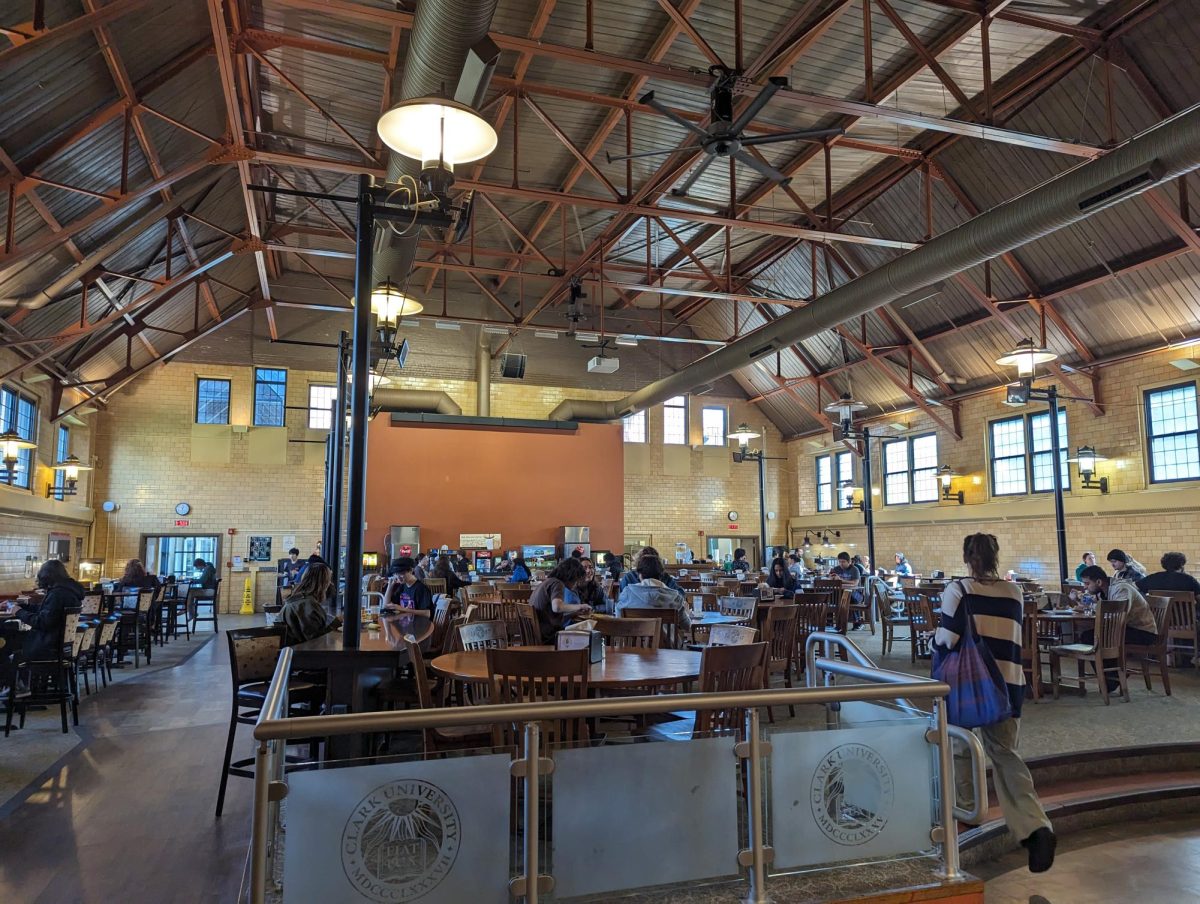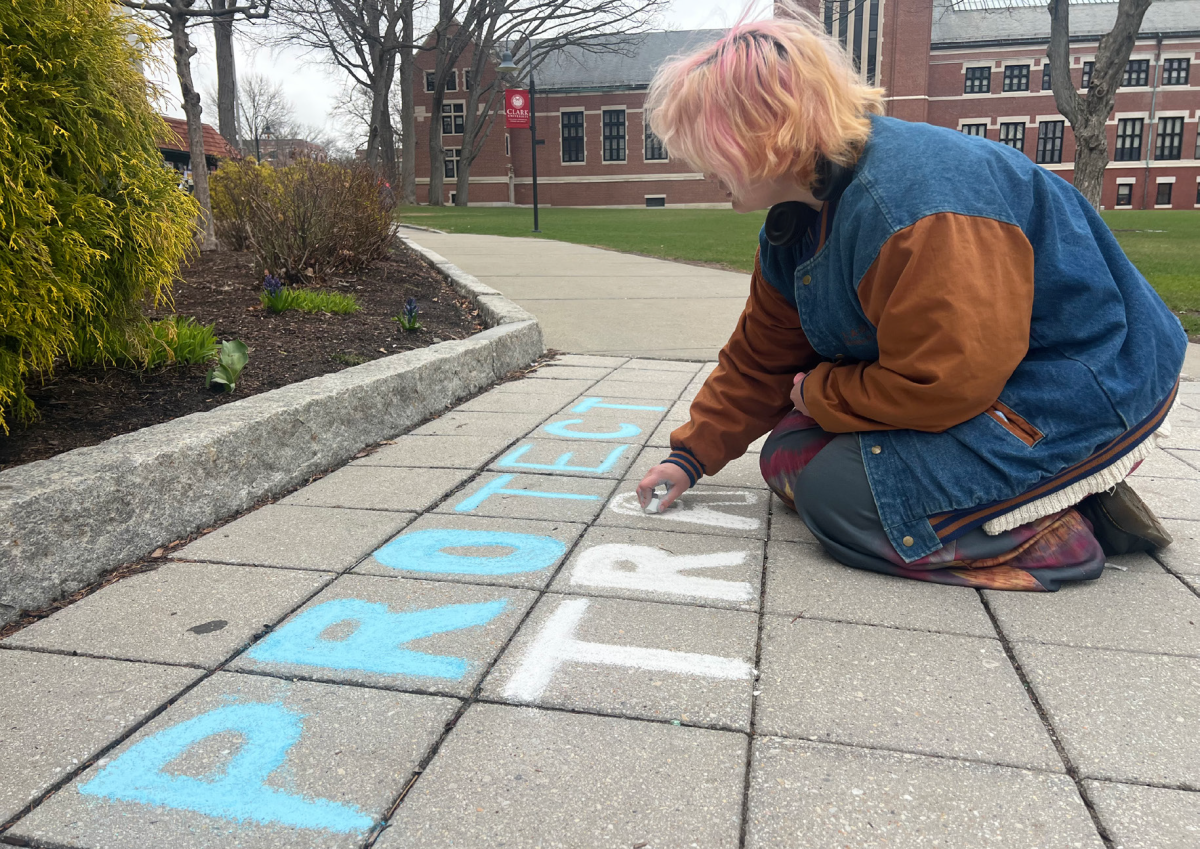The Higgins University Center is home to Clark University’s only dining hall. Officially named “Higgins Cafe” and known to students simply as “Higgins.”
The Scarlet spoke with Denis Gagne, general manager of dining at Clark University, who has worked at Clark for years. Gagne estimates that Higgins serves 500 people for breakfast, 800 for lunch, and another 800 for dinner. The official capacity of the dining room is 350 people.
Serving that many students is not Dining Services’ only hurdle. Another is equipment. The space behind the counters on the first floor is crowded with broilers, steamers, and a few ovens. This is “finishing equipment,” used for already-prepared food that needs to be quickly reheated before being served.
Prep work happens downstairs in the main kitchen. Produce gets chopped. Pastries are baked in-house.
“All that stuff [referring to Cougar Cafe pastries, Bistro prep, catering] comes out of this little kitchen in the basement that has two ovens, a stove range, and one steamer,” said Gagne.
When food is prepped it is brought on carts to be finished off or put in one of the ovens upstairs. In multi-step recipes, food can be brought up and down several times just to get to the right equipment.
After serving comes the dish room, which is roughly the size of a standard double in a Clark dorm. A conveyor belt runs through this small room, carrying in the dishes. There’s an industrial-sized dishwasher, too. Staff sort trash from compost to prevent contamination, as Clark uses an outside compost pick-up service. This is why Higgins is now almost entirely devoid of trash cans.
With no space to put clean dishes, carts are stacked high with plates and silverware. They are then placed into cubbies in front of the serving stations, which is especially tedious during busy meal times.
Unloading dishes is the only part of this labor visible to students. Much of the actual process happens elsewhere.
Gagne estimates that “usually it’s more like 40 percent labor to business. Yeah, well, we run closer to 50 percent because we take some more cooks in the kitchen to do more of that, scratch less process.” This means less food out of the box and more made in-house.
Produce chopped for every meal. Croutons and desserts baked in-house. Fresh cooking from scratch drives up the cost of labor.
Dining hall staff work at Clark but do not work for Clark. Instead, Clark contracts food service to Sodexo. The contract expired several years ago, but the COVID-19 pandemic pushed it back.
“My hope is that the changes in my time translate well enough that the students and the decision makers, whoever that is, decide to keep us,” Gagne said in reference to the contract. “I have no control over it in the end.”
Gagne was previously employed at Clark as the executive chef. Gagne came back to Clark after Sodexo workers decided to unionize. At the time, workers made minimum wage. “Now it’s like, dish room makes 16-ish [dollars per hour,] and cooks make 19-ish,” he estimated.
In the past decade, the dining hall has undergone a variety of overhauls to better serve students’ preferences and beliefs. For example, Kosher Kitchen opened in 2011. Clark’s mashgiach is named Sylvia.
“There always has to be a mashgiach here,” Gagne said. “And if you don’t know, [that] is somebody that makes sure that the kosher rules are followed during preparation and intake of the food.”
That means that when Sylvia isn’t at Clark, another mashgiach stays in the kitchen to ensure kosher rules are followed.
A change made this year is the removal of nuts. Peanut butter was replaced with sun butter, and Nutella was gotten rid of altogether. Students spoke to Gagne about their allergies, and he worked to accommodate them.
Gagne wants to pursue an open dialogue with students. “Because if one student is speaking up about the allergen,” Gagne said, “then maybe there are others that aren’t comfortable speaking up.”




